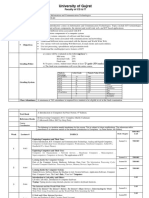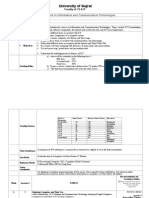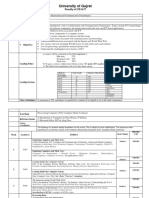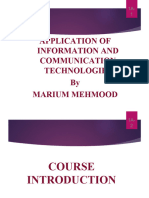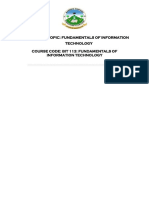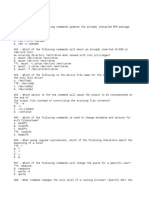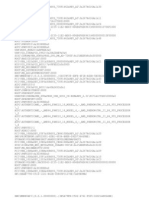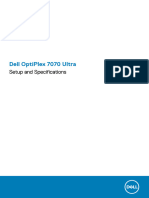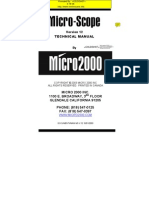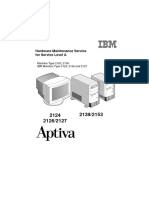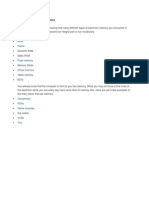0% found this document useful (0 votes)
111 views10 pagesComputer Fundamentals
The document outlines a course titled 'Applications of Information and Communication Technology' which is worth 3 credit hours and includes both lectures and practical lab work. It covers a wide range of topics including computer basics, software applications, web development, and programming, with a structured weekly breakdown of content. The course aims to equip students with fundamental ICT skills and knowledge, preparing them for further studies and practical applications in the field.
Uploaded by
akbarali786sarwar123Copyright
© © All Rights Reserved
We take content rights seriously. If you suspect this is your content, claim it here.
Available Formats
Download as PDF, TXT or read online on Scribd
0% found this document useful (0 votes)
111 views10 pagesComputer Fundamentals
The document outlines a course titled 'Applications of Information and Communication Technology' which is worth 3 credit hours and includes both lectures and practical lab work. It covers a wide range of topics including computer basics, software applications, web development, and programming, with a structured weekly breakdown of content. The course aims to equip students with fundamental ICT skills and knowledge, preparing them for further studies and practical applications in the field.
Uploaded by
akbarali786sarwar123Copyright
© © All Rights Reserved
We take content rights seriously. If you suspect this is your content, claim it here.
Available Formats
Download as PDF, TXT or read online on Scribd
/ 10






